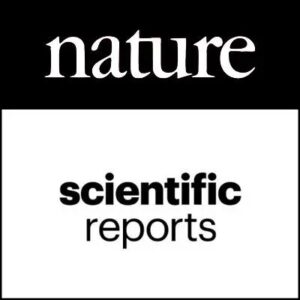Publications

Immediate effect of ice and dry massage during rest breaks on recovery in MMA fighters : a randomized crossover clinical trial study
Authors: Robert Trybulski 1, 2, Arkadiusz Stanula 3, Andriy Vovkanych 2, Jaroslaw Muracki 4, 5, Hsing-Kuo Wang 6, 7, Adrian Kuzdzal 8
Affiliations:
- Medical Department, Wojciech Korfanty Upper Silesian Academy, Katowice 40-659, Poland
- Department of Physical Therapy and Ergotherapy, Ivan Boberkyj Lviv State University of Physical Culture, Lviv 79007, Ukraine
- Laboratory of Sport Performance Analysis, Institute of Sport Sciences, Jerzy Kukuczka Academy of Physical Education in Katowice, Katowice 40-065, Poland
- Institute of Physical Culture Sciences, Department of Physical Culture and Health, University of Szczecin, Szczecin 70-453, Poland
- Provita Medical Center, Zory 44-240, Poland
- School and Graduate Institute of Physical Therapy, National Taiwan University, Taipei, Taiwan
- Center of Physical Therapy, National Taiwan University, Taipei, Taiwan
- Institute of Health Sciences, College of Medical Sciences, University of Rzeszow, Rzeszow 35-310, Poland
Journal: Nature - Scientific Reports - April 2025, Volume 15, Article no. 12323 (DOI: 10.1038/s41598-025-97194-x)
-
Field & Applications:
- Sport
- Treatment evaluation
- Fatigue / Overtraining
- Warm-up / Recovery
The MMA fight consists of 5 rounds of 5 min with minimal breaks between the rounds. The exertion load is excessive for the fighters, and the 1-minute breaks give little time for any intervention.
This study aimed to examine the acute effects of two methods of regenerative strategies, ice massage and dry massage, and analyze their impact on Reactive Strength Index (RSI – m s− 1), muscles’ biomechanical properties: muscle tone (T-Hz), elasticity (E – arb- relative arbitrary unit), stiffness (S – N/m), pressure pain threshold, (PPT – N/cm²), and compare their influence with passive rest. The maximum number of jumps (J – n) treated as an indirect effective measure of the interventions that were conducted was also recorded for each participant in each regenerative strategy.
Thirty male MMA fighters took part in the study. Three subgroups of 10 participants (Ice massage, n = 10; dry massage, n = 10; and control, n = 10) were enrolled in the cross-over randomized clinical trial study design. The groups were randomized, and each group underwent each procedure (30 tested in each procedure). Five sets of jumps on a 50 cm box to exhaustion were used as a fatigue protocol with 1-minute breaks. The recovery interventions were performed during the breaks.
The statistically significant results revealed in the post-exercise tests: RSI and number of jumps – the lowest decrease was observed in the massage group (p < 0.001 and p < 0.0001 respectively), the minor increases in T, E and S were also observed in the massage group ((p < 0.0001 for all measurements); the post-exercise PPT was the highest (higher means better) in the Ice group (p < 0.001). In every other parameter, the ice massage group showed slightly worse results than the dry massage group. Responder analysis confirms that the number of jumps profoundly impacted biomechanical variables, leading to increased muscle stiffness and tension, decreased elasticity and force endurance, and heightened pain sensitivity.
Obtained results confirm that both dry and ice massage can significantly affect acute recovery following rounds of combat sport-related exertions. The Ice and Massage interventions differed in effectiveness – Massage was the most effective in preventing increases in stiffness and tension and preserving muscle elasticity. At the same time, ice cooling had a lesser impact, particularly on muscle elasticity changes but higher for PPT.
Keywords: cooling, mechanotransduction, regeneration, combat sport, myotonometry
Both ice massage and dry massage performed during 1 min brakes between 5 sets of box jumps eccentric exercises up till exhaustion significantly improves regeneration measured as muscle biomechanical parameters (stiffness, elasticity and muscle tone), preserve the lowering of the PPT, helps preserve the muscles ability to generate power in dynamic eccentric motion and help reduce muscle fatigue measured by the number of jumps performed till exhaustion in box jumps exercise when comparing to a passive break. The dry massage was more effective in case of biomechanical parameters compared to ice massage, and the ice massage was better in preventing the decrease of PPT compared to the dry massage. Both strategies are proven to be effective in highly trained MMA athletes and are recommended to use in rest brakes during real fight conditions.


